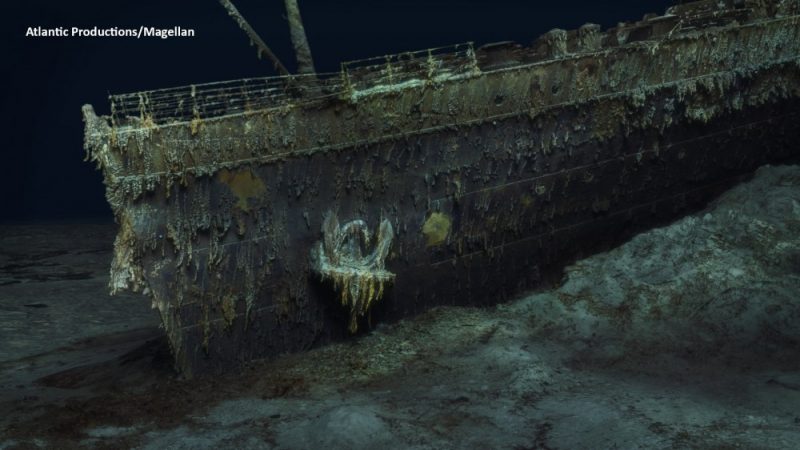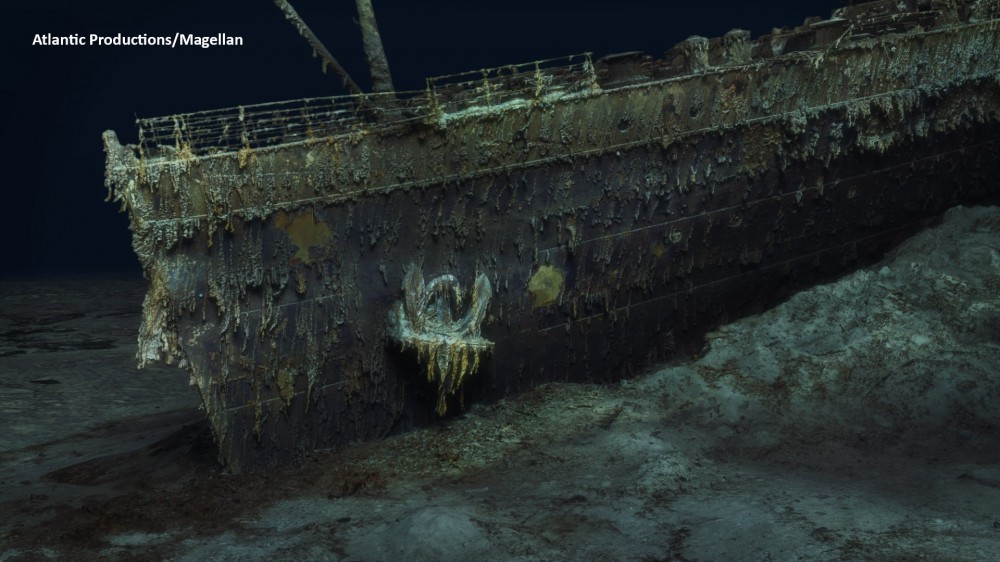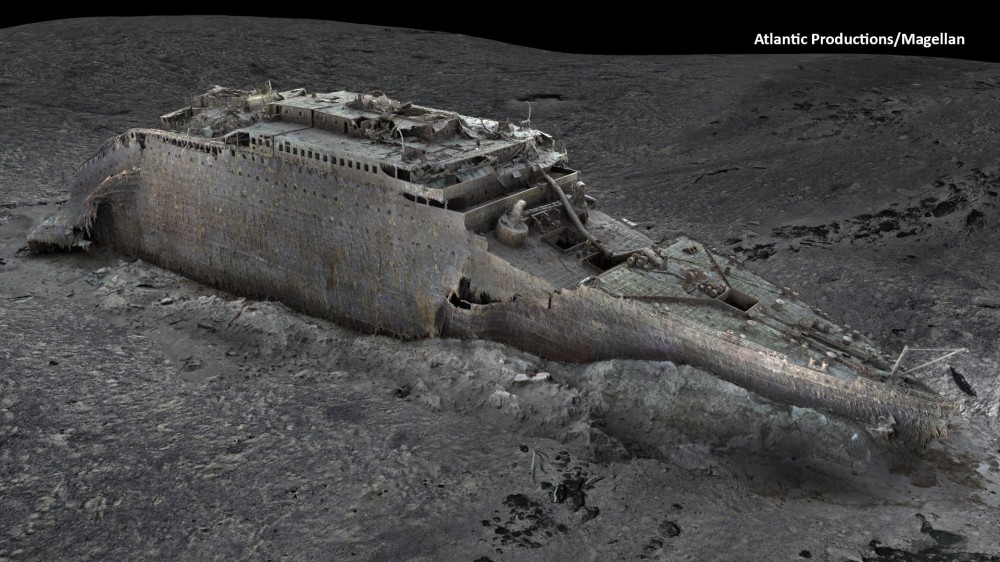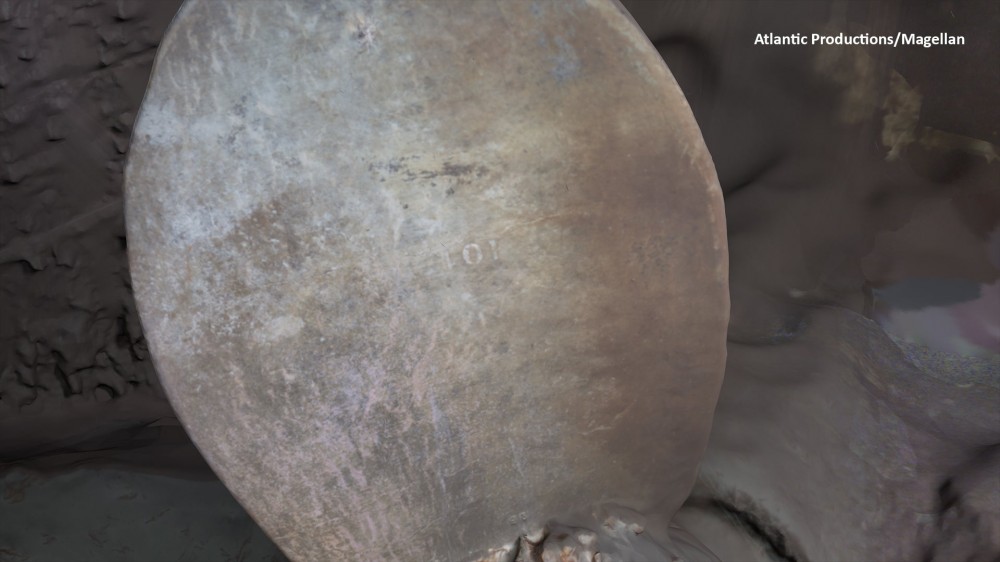Staggering 3D scan of the Titanic shows the wreck down to the millimeter

Months of painstaking work analyzing over 16 terabytes of imaging and 4K video data has resulted in the first full-sized 3D scan of the RMS Titanic’s stunning, sunken remains.
Per the BBC, specialists working for the deep-sea mapping company Magellan Ltd. began remotely piloting two deep sea submersibles during the summer of 2022. The pair of subs, Romeo and Juliet, collected over 700,000 images over the 3-mile wreckage site during their more than 200 hours of diving time. The results are renderings in such detail that they showcase one of the cruise liner propeller’s serial numbers alongside passengers’ shoes and bottles of unopened champagne.
Over 1,500 people died after the cruise liner struck an iceberg and sank into the frigid Atlantic Ocean waters during its 1912 maiden voyage from Southampton, UK, to New York. Numerous expeditions have surveyed the Titanic’s remains since its rediscovery in 1985, but until now the ocean’s pitch-black environment at 3,800m (12,500ft) coupled with the ship’s sheer size have only allowed murky glimpses and snapshots of wreckage.
Now, however, experts can begin studying the Titanic’s remnants with an entirely new level of detail and precision. In a statement, Parks Stephenson, a longtime Titanic researcher, explained, “What we are seeing for the first time is an accurate and true depiction of the entire wreck and debris site. I’m seeing details that none of us have ever seen before and this allows me to build upon everything that we have learned to date and see the wreck in a new light.”



According to Stephenson, despite knowing the disaster’s cause, we still aren’t sure what really happened when the ship hit the iceberg. “We don’t even know if she hit it along the starboard side, as is shown in all the movies—she might have grounded on the iceberg,” Stephenson told the BBC. Additionally, examining portions such as the ship’s stern could uncover the physics behind how the ship actually landed upon the sea floor.
Time is of the essence for future visits to the Titanic’s remains, as microbial life continues to eat away at portions of the ship while other pieces disintegrate within the deep ocean’s hostile environment. But even so, the newest imagery will be an invaluable historical asset for researchers as they continue to learn from one of the 20th century’s most famous tragedies.
The 2022 expedition was detailed by a film crew working alongside Magellan Ltd. for Atlantic Productions, with plans to release a documentary on the project in the near future.










